The crankset – often referred to as a chainset – is one of the most important parts of a bicycle. As one of the key components that helps move the chain as you pedal, it’s at the heart of the drivetrain and helps make a bike, well, a bike.
In this guide, we’ll tell you everything you need to know about cranksets, delving into crankset types, chainring sizes, crank length and crankset compatibility, as well as taking a closer look at road, mountain bike and gravel bike cranksets.
In short, we’ll open the Pandora’s Box that is the bicycle crankset.
Seemingly simple, there’s a wealth of complexity hidden in the bit of your bike that enables you to keep your wheels turning.
What is a crankset?

Let's start with the basics.
The crankset is, quite simply, the part of the bike you pedal to move you and the bike forward. In North America, it’s typically called a crankset, while in the UK it’s often referred to as a chainset, although crankset or simply ‘cranks’ are still commonly used.
The crankset comprises the two crank arms to which the pedals are attached, and between one and three chainrings that the chain runs over.
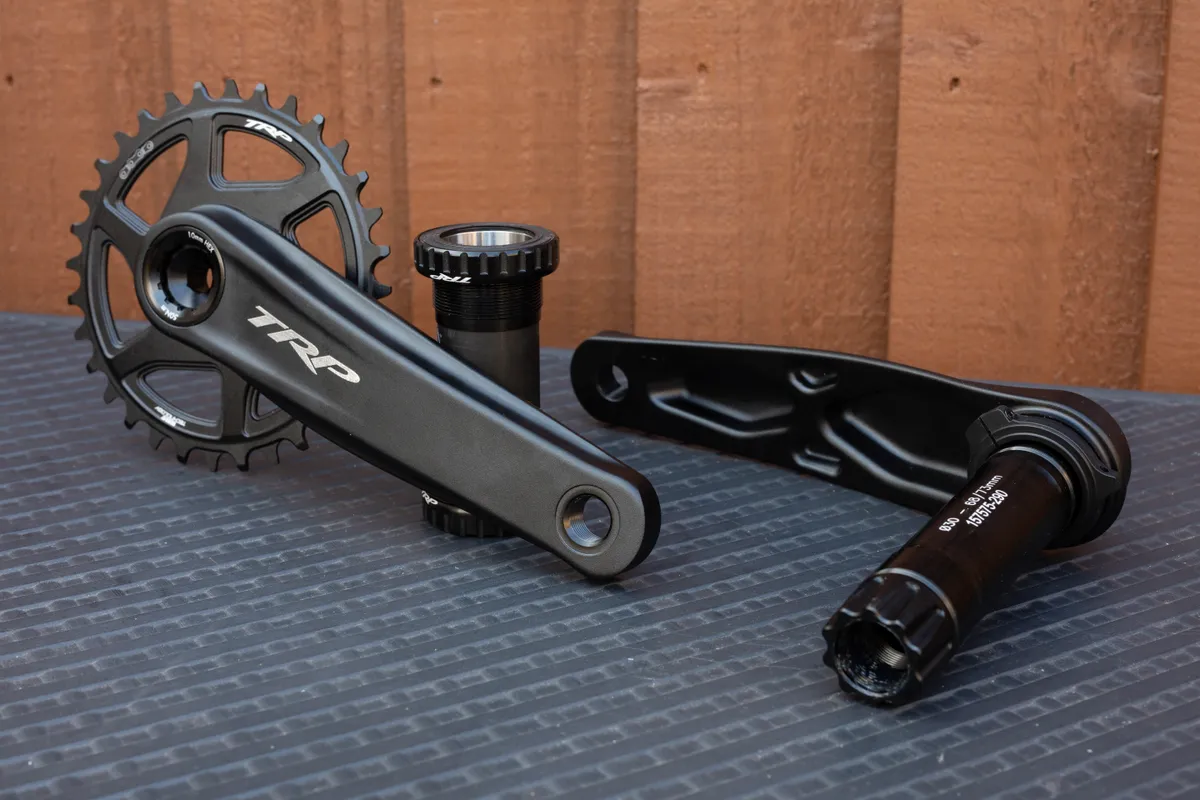
In modern designs, it also typically includes the bit in the middle – the axle or spindle – that connects the two sides. In traditional cranksets, the axle is part of the bottom bracket, the bearing assembly that connects the cranks to the bike’s frame.
In combination with your rear gearing, which is usually provided by a rear derailleur and a cassette with multiple sprockets, your crankset should give you a wide enough range of gears to select one appropriate for the terrain you’re riding on.
It sounds simple, but the crankset is one of those bike components that hides its complexity in the numerous options, standards and compatibility conundrums.
Crankset sizes – 1x, double and triple
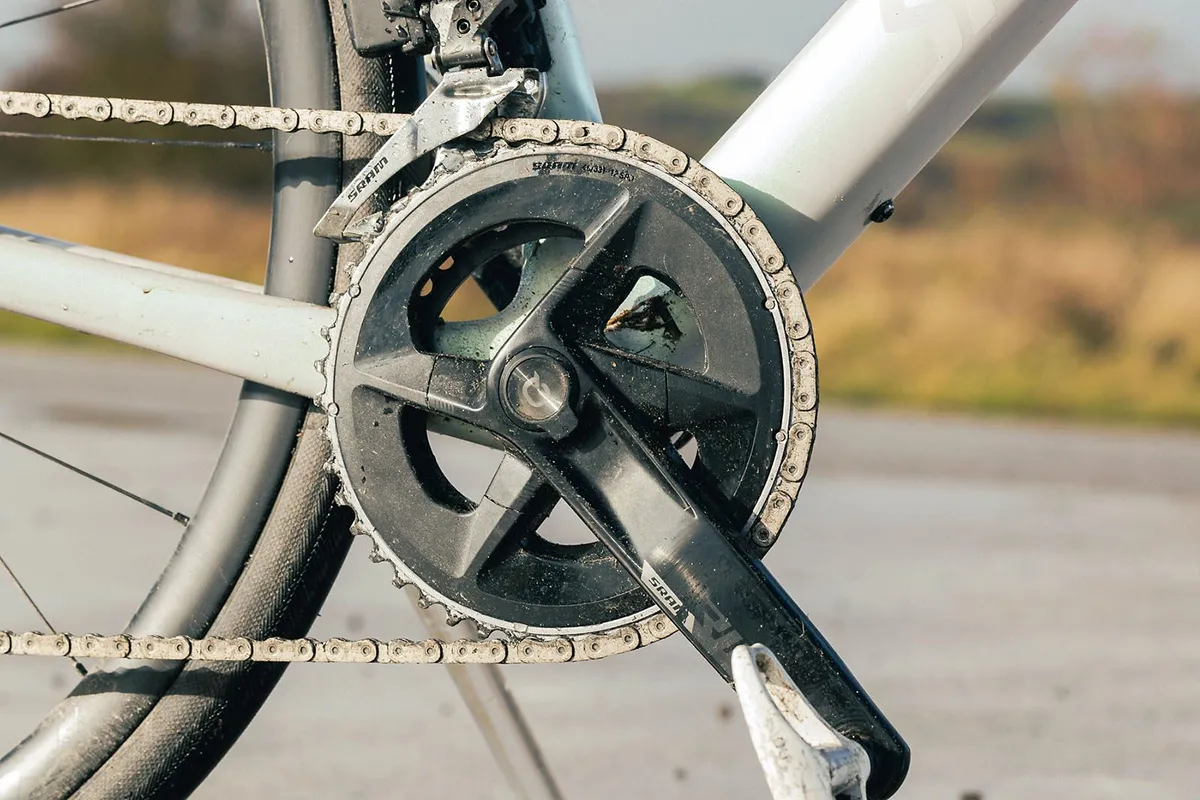
Cranksets generally come with either one, two or three chainrings.
Two chainrings are most common on road bikes, while the latest mountain bikes tend to come with a single ring. Modern systems will give you plenty of range both for getting up hills and faster riding.

Single-ring systems, known as 1x drivetrains, are becoming increasingly popular on gravel bikes and can be found fitted to road bikes, too. Many 1x cranksets use narrow-wide chainrings for better chain retention.
Combined with the cassette, the number of teeth on the crankset's chainrings will define your bike's gearing. However, chainring sizes vary significantly, with options for every type of riding, so we'll cover them separately below.
The chainrings are usually bolted onto arms that protrude from the right-hand crank arm, also called a spider. There are exceptions though, which we'll come on to.
You can’t easily swap the number of chainrings your bike is set up for, because the front derailleur and associated shifter will be specific for your setup and would need to be replaced, too.

Power meters incorporated into the crankset’s arms or spider are popular with performance-focused road cyclists (and some mountain bikers and gravel riders, too). Pedal-based power meters are also popular.
There is a wide range of power meter models available – read our guide to the best power meters – but they are pricey and you may need specialist tools to fit them in place of your bike’s existing crankset.
Swapping chainring sizes
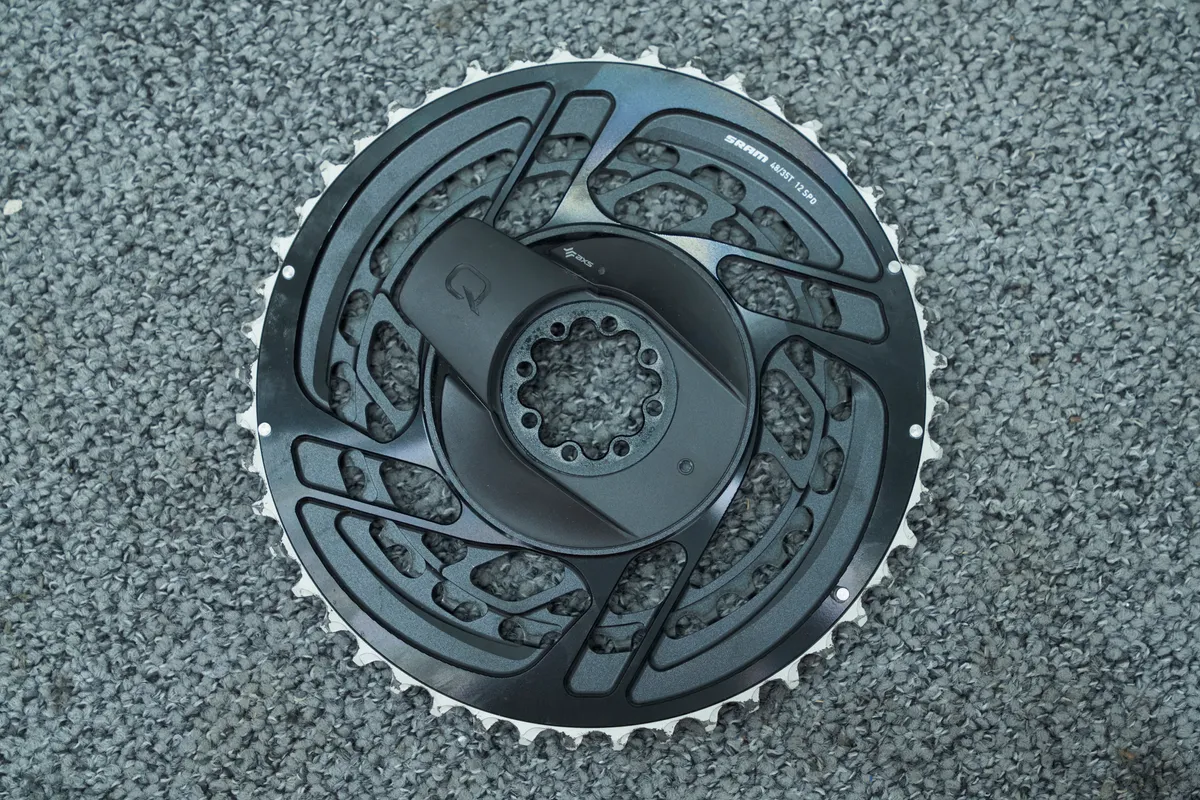
Swapping chainring sizes on a double or triple crankset isn’t as simple as it sounds, because specific chainrings are designed to work together, with tooth positioning and ramps on the rings there to help the chain shift smoothly.
A mismatched pair of rings might make for particularly awkward shifts from the small to the large ring and there’s an increased risk of the chain falling off the rings altogether, whether you’re shifting up or down.
Groupset brands also recommend a maximum difference in the number of chainring teeth that a front derailleur can deal with, so you can’t usually increase the jump between rings.
Also, the teeth on a chainring are sized for the number of gears on your bike so you can’t, for example, use an 8-speed chainring with an 11-speed chain, because the teeth would be too wide in that instance.
If you do want to swap chainring sizes, check for compatibility beforehand.
It is a lot simpler, though, on a single-ring setup, with only chain length needing much consideration.
Crank lengths
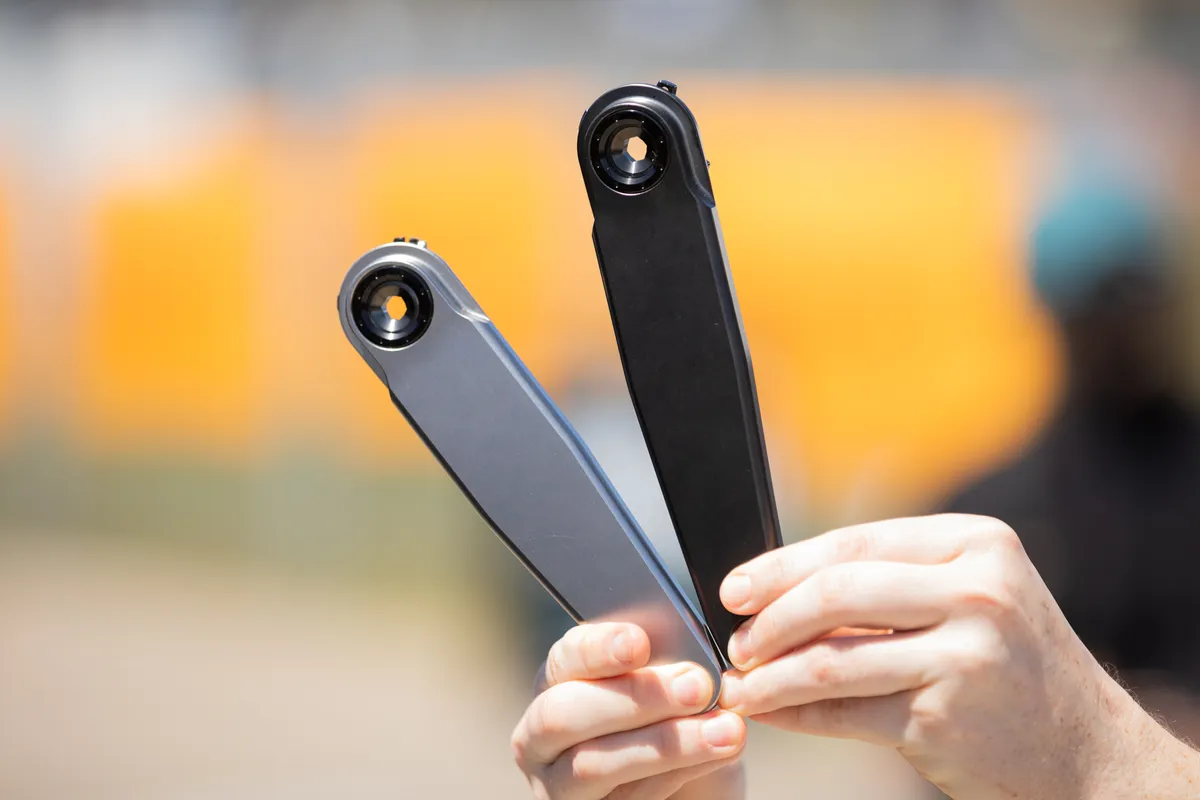
A variety of crank lengths are available.
The shortest is usually 165mm (measured from the centre of the bottom bracket to the centre of the pedal spindle) and they increase in 2.5mm increments up to 175mm, although there are exceptions that go longer.
The most common length found on mid-sized road bikes tends to be 172.5mm, while mountain bikes most often have 170mm or 175mm cranks.
Longer crank arms give you more leverage. You’ll find them on some larger-sized bikes, too. Be careful about fitting a longer crank to a bike than the one it came with though, because it will reduce your ground clearance if you’re pedalling through a fast corner or over obstacles off-road.
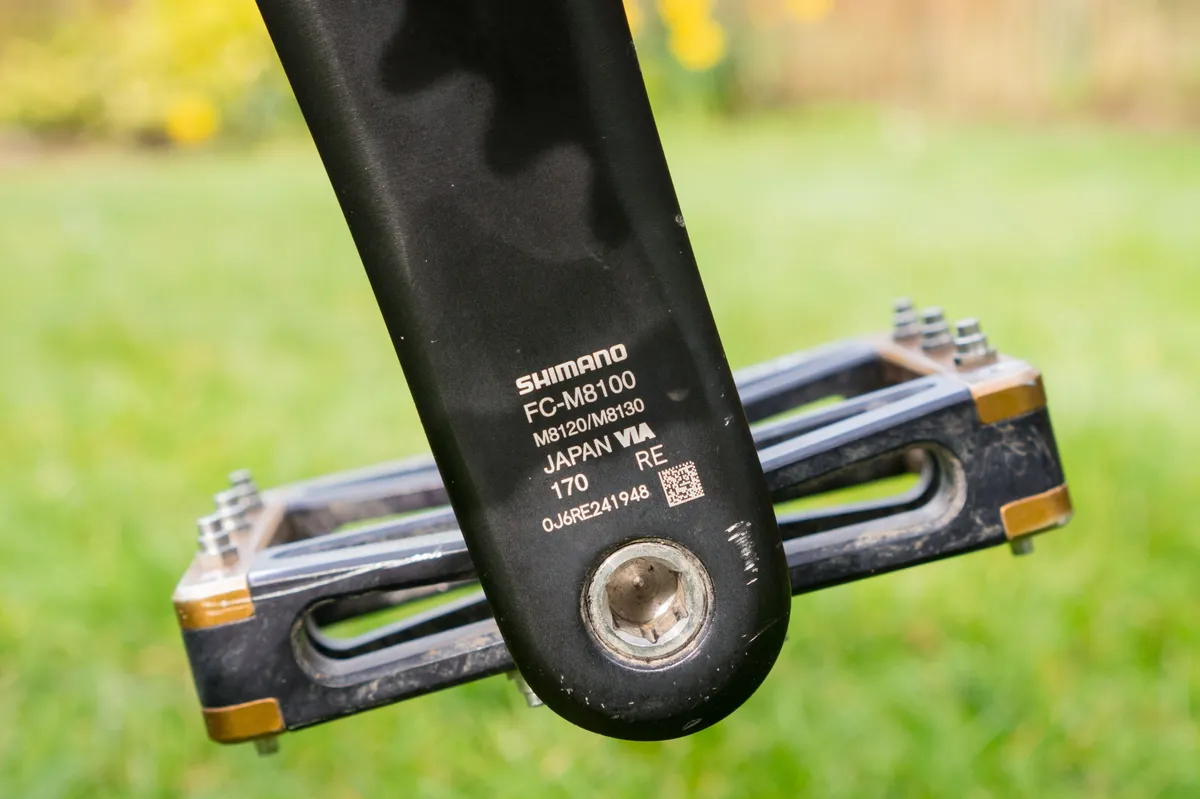
A shorter crank arm tends to enable you to keep up a higher cadence. They're often preferred by triathletes.
In practice, we’re only talking about a few millimetres difference between ‘long’ and ‘short’ cranks – most riders will barely notice the difference in normal riding, from one size to the next.
Crankset compatibility
You can replace the chainrings on your crankset, but not all chainrings will fit all cranks.
First, different cranksets may have a different number of arms or direct-mount interfaces (connecting the cranks to the chainrings), and they may be positioned differently.
Many of Shimano’s road cranksets have four arms, but they’re not distributed evenly around the spindle.
In contrast, SRAM’s 11-speed road bike cranksets have five arms, distributed evenly and with one chainring bolt screwing into the rear side of the crank arm.
Campagnolo road bike cranksets such as Super Record Wireless come with four arms, distributed evenly, as do FSA’s.
Bolt circle diameter (BCD) explained
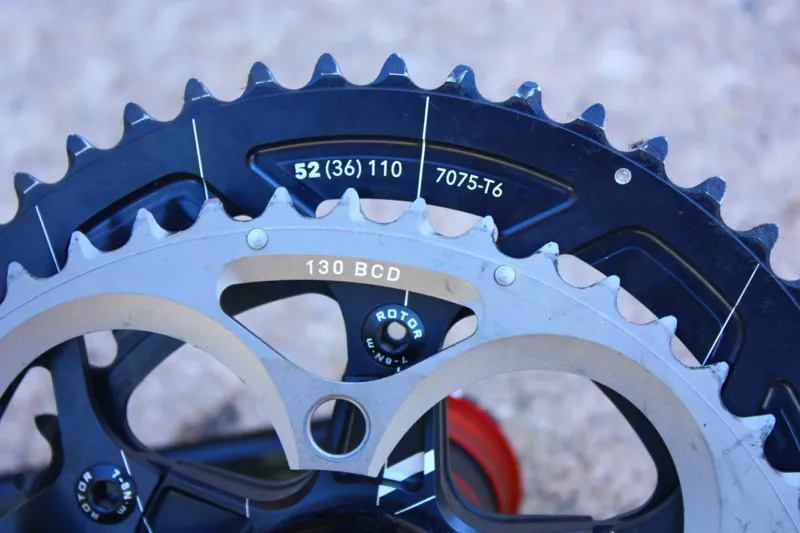
On conventional cranksets, the chainrings bolt to the spider arms on the right-hand crank.
The bolts form a circle around the spider and the distance across that circle at the midline of the bolts is the 'bolt circle diameter' or BCD (Shimano’s literature calls this the 'pitch circle diameter' or PCD).
A replacement chainring has to have the same BCD as the crankset, as well as the same positioning of the bolts, so the two join up.
The BCD of any given crankset also sets the lower teeth limit for chainring compatibility.
We've created a helpful guide on how to measure your BCD that should help determine which size you have.
If you have a 130mm BCD crankset, for example, the smallest compatible chainring is a 38t. On a 110mm BCD crankset, the lower limit drops to 33t, and so on.
In some older systems, the BCD varied between chainring sizes, so a Shimano 53/39t road crankset had a different BCD (130mm) to a 50/34t (110mm), meaning you couldn’t swap between them without replacing the entire crankset.
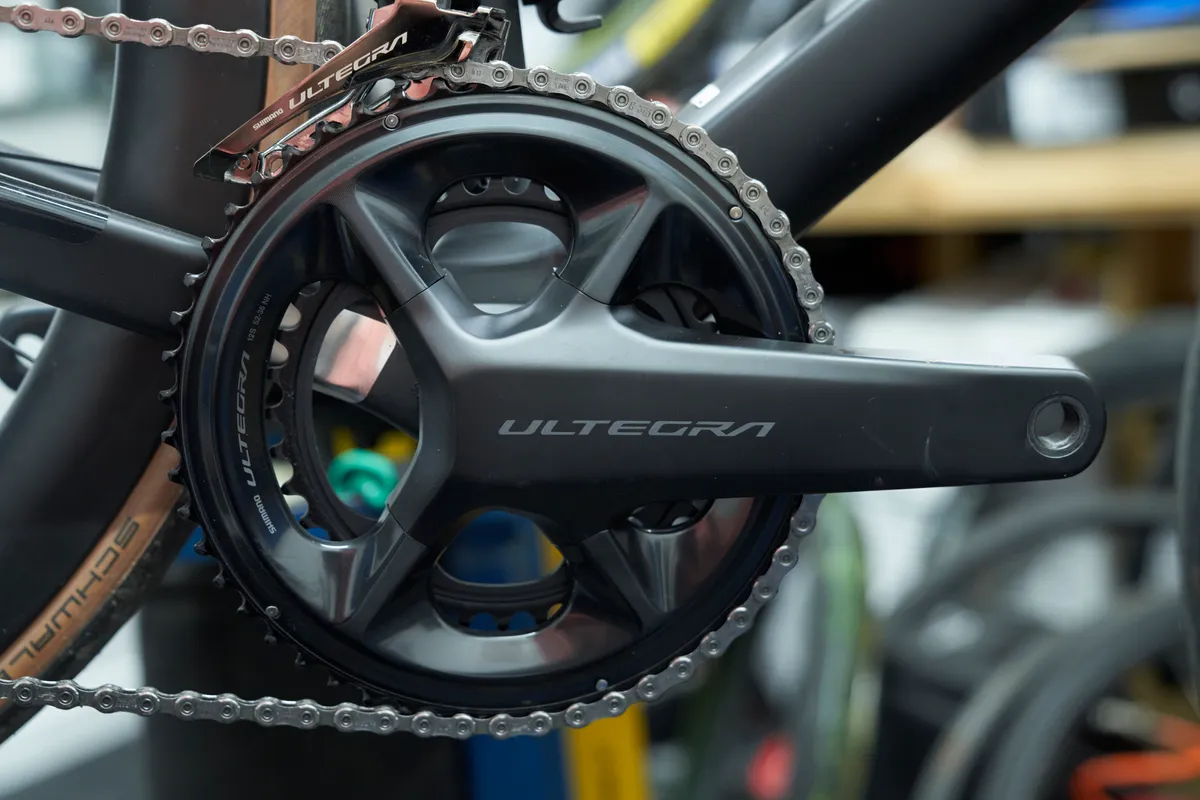
That’s changed with newer Shimano road cranksets, which have settled on 110mm BCD for all chainring sizes, giving you the option to increase or decrease your chainring sizes without having to change the cranks as well.
SRAM’s crankset BCDs vary between setups, though. A 12-speed SRAM Force eTap AXS or SRAM Rival eTap AXS two-ring crankset and single-ring crankset both have a 107mm BCD, but a SRAM Force Wide double has a 94mm BCD.
Drop to 11-speed and the BCD for a Force crankset goes out to 110mm or 130mm, dependent on chainring compatibility. There’s a different BCD again for SRAM’s non-direct mount S-650 Eagle MTB crankset – 104mm. That means there’s limited interchangeability between SRAM chainrings.
In some setups, the BCD arrangement is even more complicated. The inner chainring is sometimes fitted to the inside of the outer ring, or separately onto the crank spider.
This setup uses a second BCD for the inner ring that’s different from the outer ring’s BCD. An example is the Shimano GRX gravel groupset, where the outer ring’s BCD is 110mm and the inner ring’s 80mm.
Direct-mount cranksets
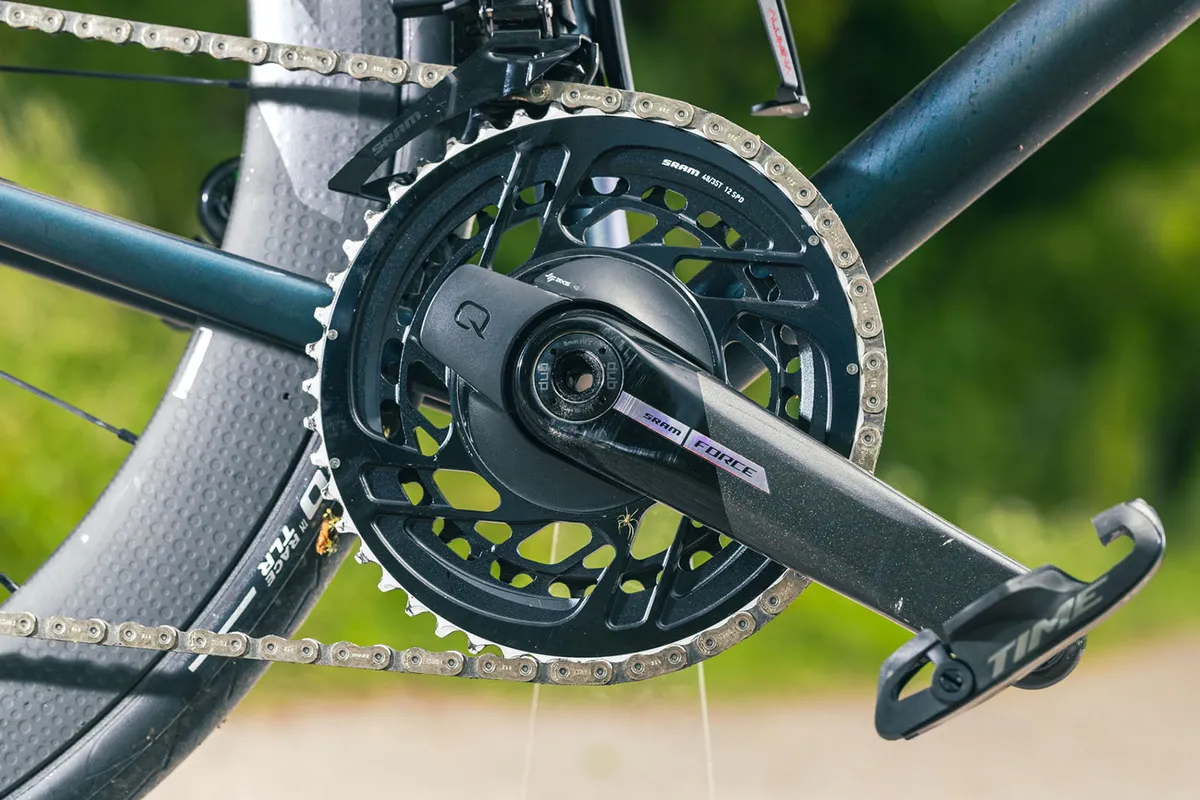
Finally, there are an increasing number of 'direct-mount' cranksets, where the outer chainring fixes directly to the crankset spindle, eliminating the bolts in the arms and saving weight.
This system is common on single-ring mountain and gravel cranksets. Again, there’s limited compatibility between different brands’ systems.
Some SRAM cranksets, such as Force AXS and Red eTap AXS have direct-mount systems with the two chainrings CNC machined from a single piece of aluminium.
SRAM says this improves shifting and chain management because the chainring is stiffer, though it does mean you need to change the entire set should one chainring wear out.
Cannondale's SpiderRings are similar, except the chainrings are forged rather than machined.
Bottom bracket standards
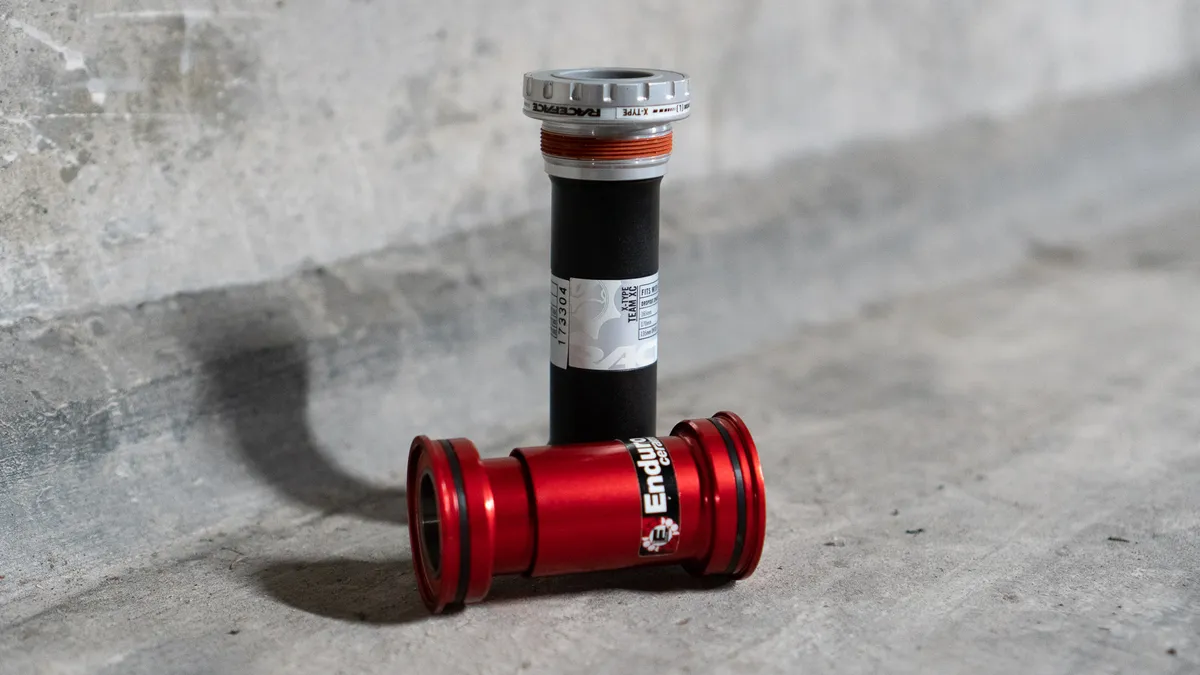
The next complication is the huge number of bottom bracket standards.
This can cover the distance between the bearings in the bottom bracket shell, how they’re secured in the bike frame and the diameter of the crankset’s spindle.
A road crankset typically won’t fit in an MTB bottom bracket and vice versa, although this is not a hard and fast rule.
It’s even more complex because there are different standards within both mountain bike groupsets and road groupsets. Some are inter-compatible, most aren’t, although you can buy adaptors for some combinations.
If you’re looking to swap your crankset, it’s best to establish the standard used in your bike and stick to that, or seek advice from a professional in a bike workshop.
The width of your bottom bracket shell is the major determinant of stance width or ‘Q-factor’. That’s the distance between your pedals and is a factor in pedalling efficiency.
In general, road cranksets have a narrower Q-factor than mountain bikes, because the latter are designed for larger tyre clearances. The rise of gravel bikes and the trend towards wider tyres on road bikes is muddying the waters here, though.
Crankset types – road vs MTB vs gravel
Crankset designs vary depending on the type of riding they are intended for. Here's an overview of common road, mountain bike and gravel cranksets.
Road bike cranksets
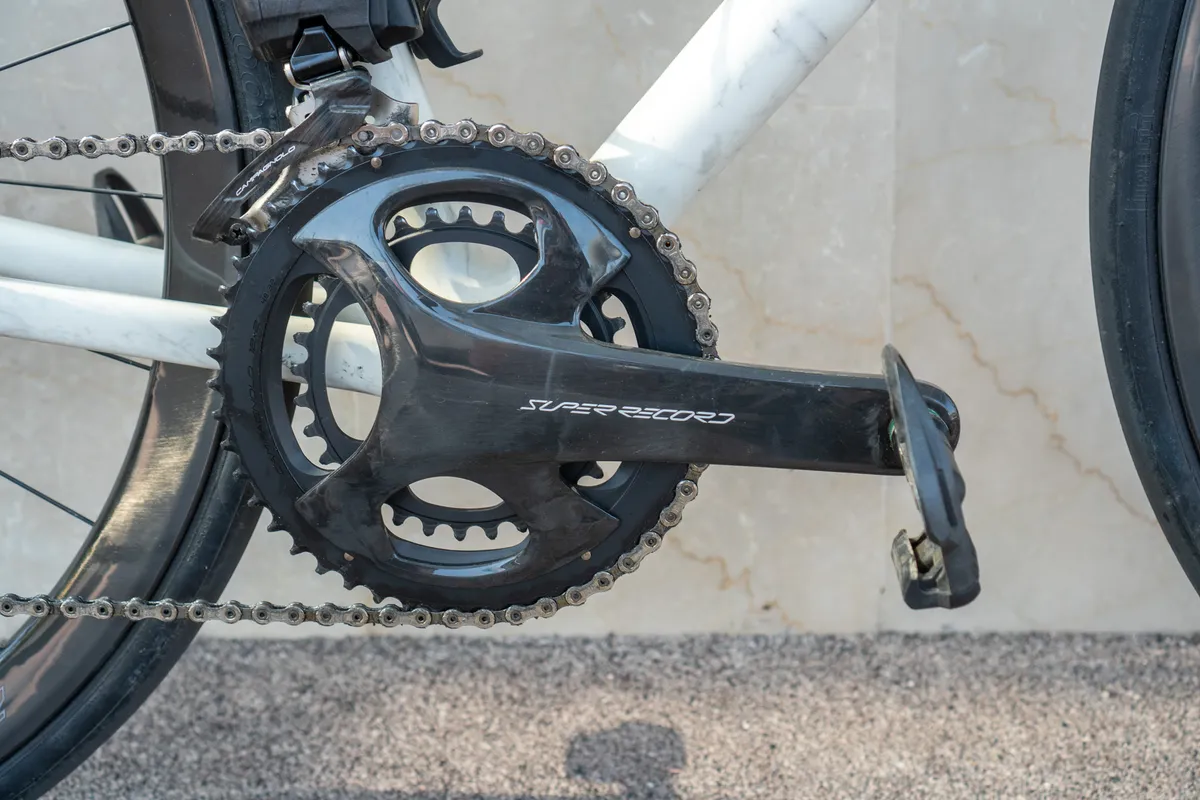
The majority of road bikes come with a two-ring double crankset and, until recently, one of three typical configurations.
'Standard' double crankset
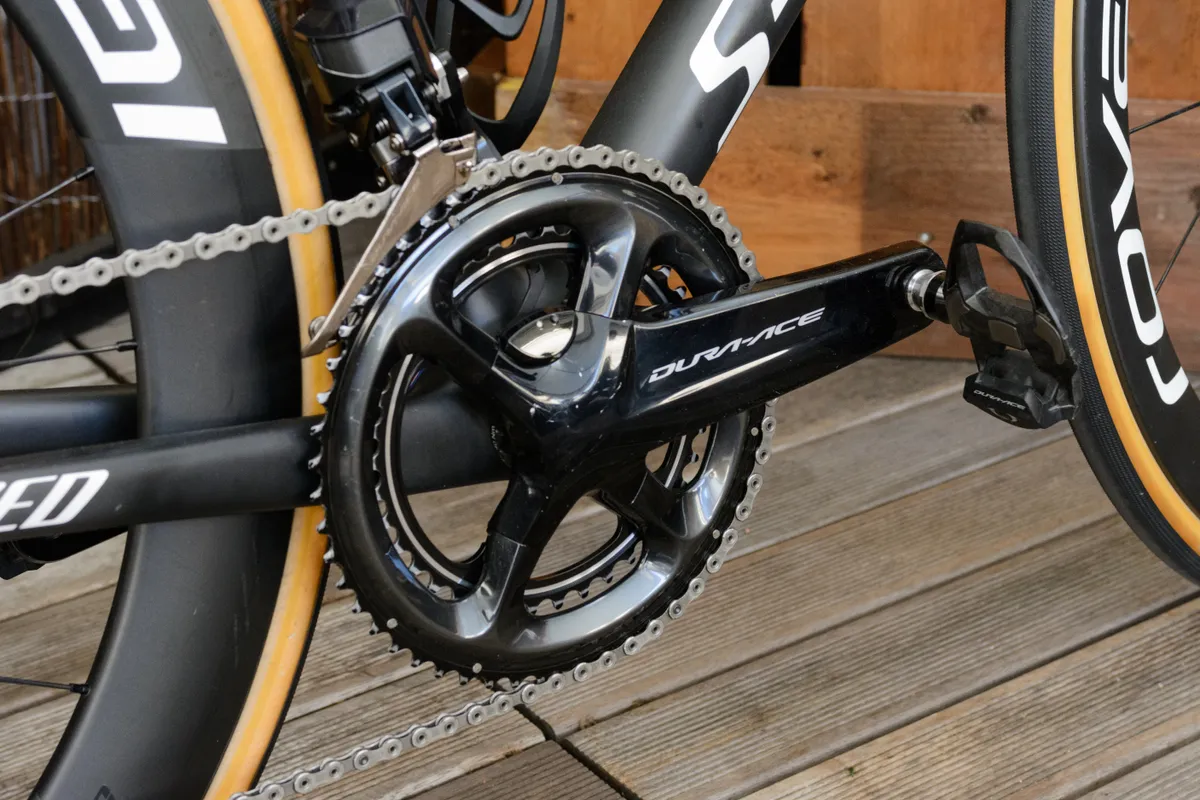
A 'standard' double crankset has rings with 53 and 39 teeth. Although it’s called standard, it’s not a very common configuration to see these days and is mainly the preserve of racers, because the fashion now is for smaller chainrings, giving lower gear ratios.
What's more, the move to 12-speed gearing means the standard double crankset is no longer standard on the latest WorldTour bikes featuring SRAM or Shimano groupsets.
With a wider spread of gearing available across 12-speed cassettes, Shimano now offers a 54/40t double crankset for the Shimano Dura-Ace Di2 R9200 groupset in place of the traditional 53/39t.
SRAM has gone the other way. Its road bike groupsets use a 10-tooth smallest cog on its cassettes. This provides more overall range compared to the 11-tooth small cog on Shimano groupsets. This enables SRAM to use smaller chainrings to provide equivalent gearing. For example, 50/37t is the largest double crankset size on its Red eTap AXS groupset.
'Semi-compact' double crankset

Leaving pro-level bikes to one side, more sporty road bikes will now typically come with a 52/36t crankset.
It’s called a 'semi-compact' and gives you slightly lower top-end gears than a 53/39, but opens up more low-range options for tackling hills. 48/35t is SRAM's 12-speed equivalent to a semi-compact.
'Compact' double crankset
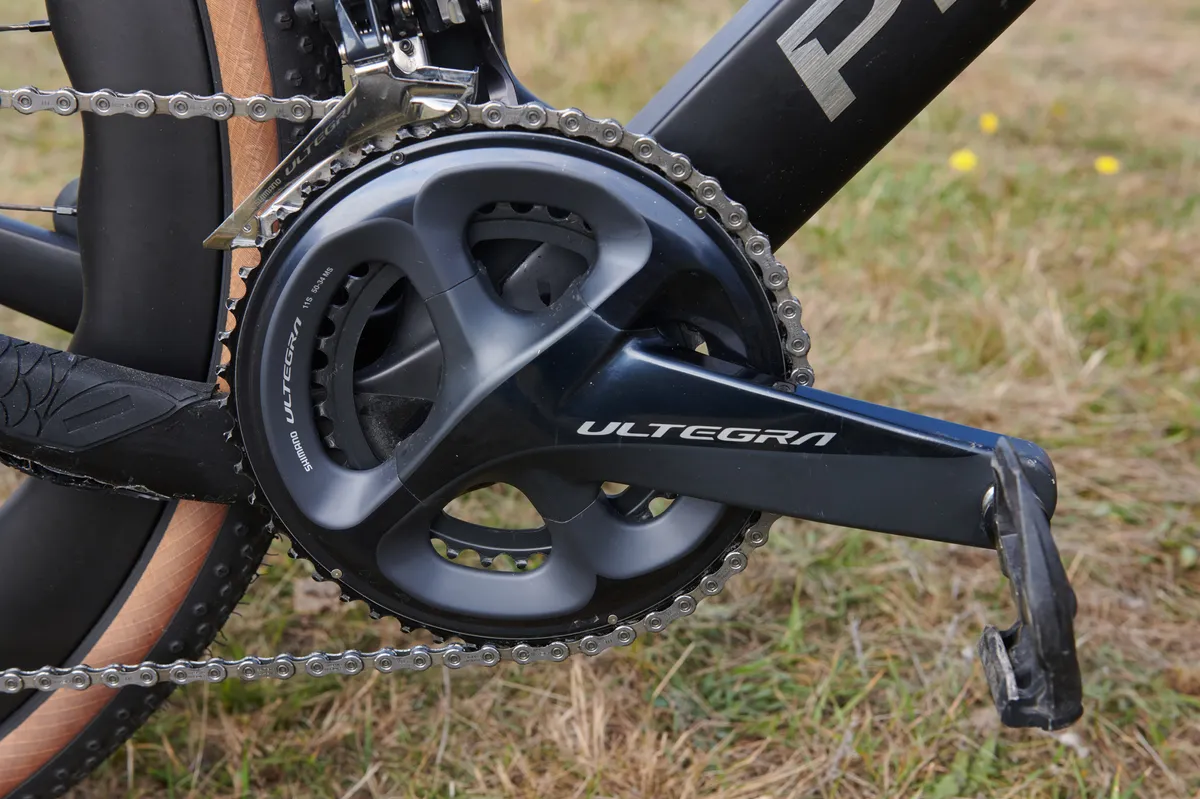
Finally, there’s the compact crankset. It’s typically found on endurance road bikes, as well as all-rounders and entry-level bikes, and typically has 50- and 34-tooth chainrings. SRAM's 12-speed equivalent is a 46/33t combination.
A compact crankset gives you plenty of low-end gearing, particularly when paired with a modern cassette, where the largest sprocket has 30 teeth or more, although your highest (hardest) gear will be lower.
1x cranksets

While 1x drivetrains have yet to take over road cycling, they are becoming more popular in the pro peloton with riders such as Primož Roglič using SRAM's 1x Red AXS XPLR gravel groupset in the high mountains of the 2023 Giro D'Italia.
1x groupsets are usually lighter than 2x cranksets and can also be more efficient thanks to an improved chainline.
Time trial bikes have used 1x cranksets for a while for these perceived benefits.
Triple cranksets
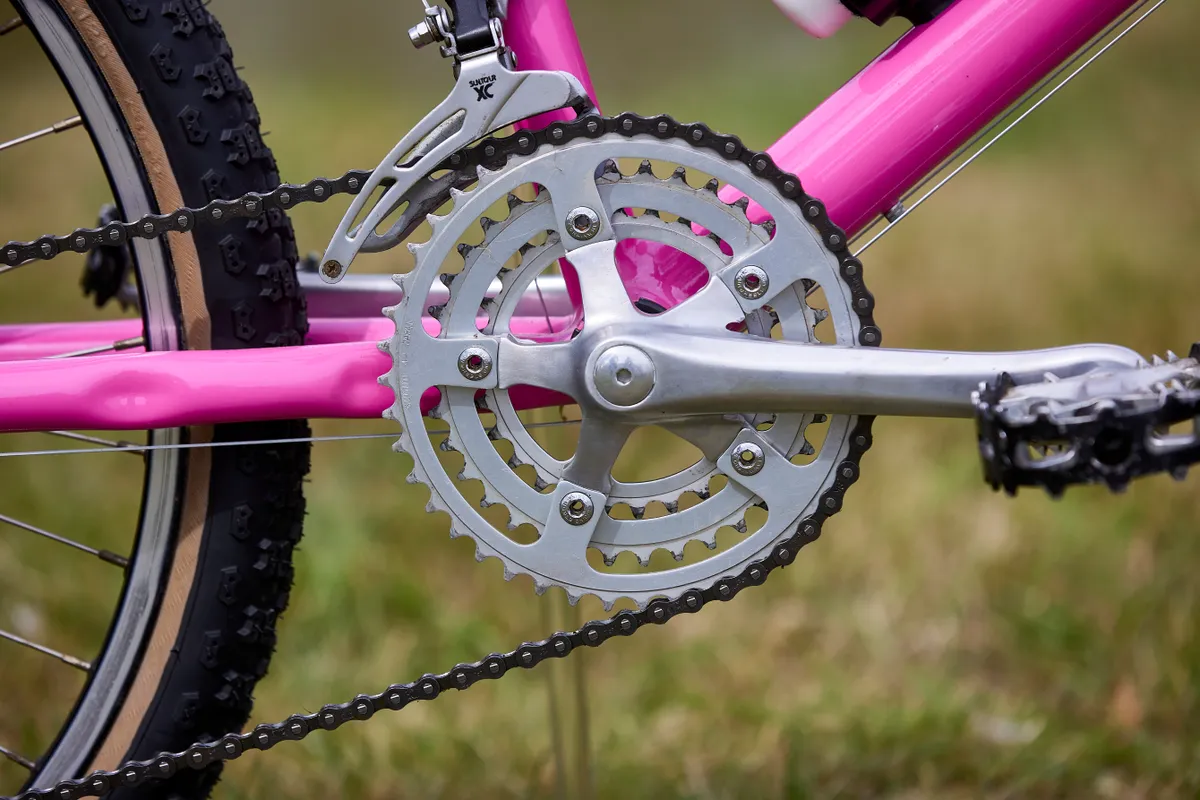
While some touring bikes have three rings, triples are rare given the spread of gearing now available through modern double cranksets.
Gravel bike cranksets – 1x or 2x?
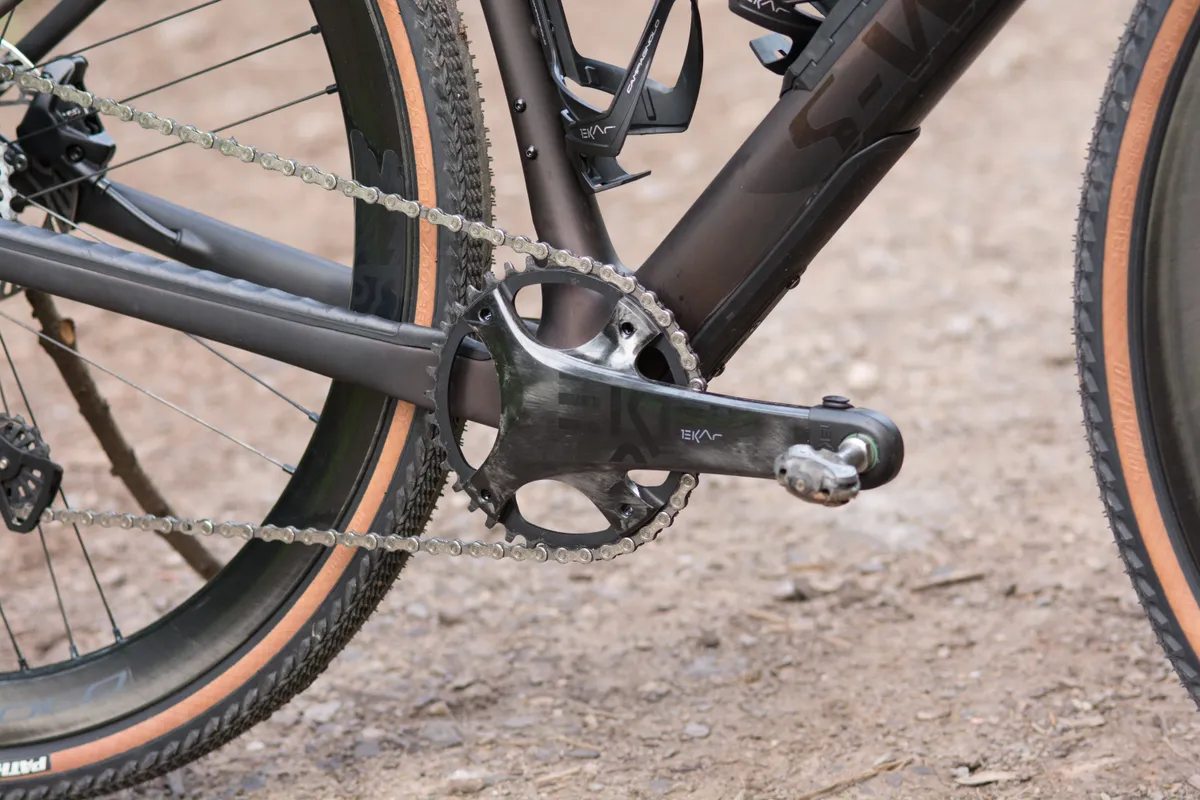
Gravel bike gearing varies significantly on the intentions of the bike, with a number of different crankset configurations on offer, across both 1x and 2x setups.
SRAM, Shimano and Campagnolo have all launched gravel groupsets – SRAM XPLR, Shimano GRX and Campagnolo Ekar – with gravel-specific gearing, and both 1x and 2x options.
Many first-generation gravel bikes had a compact road crankset with 50/34t chainrings, and you can still find some gravel or all-road bikes with this setup.
However, a compact crankset is unlikely to provide low enough gearing for off-road riding. With that in mind, it’s now much more common to see super-compact cranksets (also called sub-compact cranksets) on gravel bikes with two chainrings.
These usually have either 46/32t or 46/30t chainrings, although Shimano GRX also offers 48/31t.
This gives you lower ratios, below 1:1 with the right cassette, which should enable you to tackle harder off-road conditions or load up your bike for bikepacking.
1x cranksets are also a popular option for gravel bikes, because eliminating the front derailleur makes for a simpler mechanical setup and the bigger jumps between gears are less of a problem for gravel riding. 36t, 38t, 40t or 42t single chainrings are all commonly available.
Campagnolo Ekar offers 13 speeds and the smallest sprocket on the cassette has nine teeth. It’s single-ring only, with four crankset options between 38 and 44 teeth.
Mountain bike cranksets
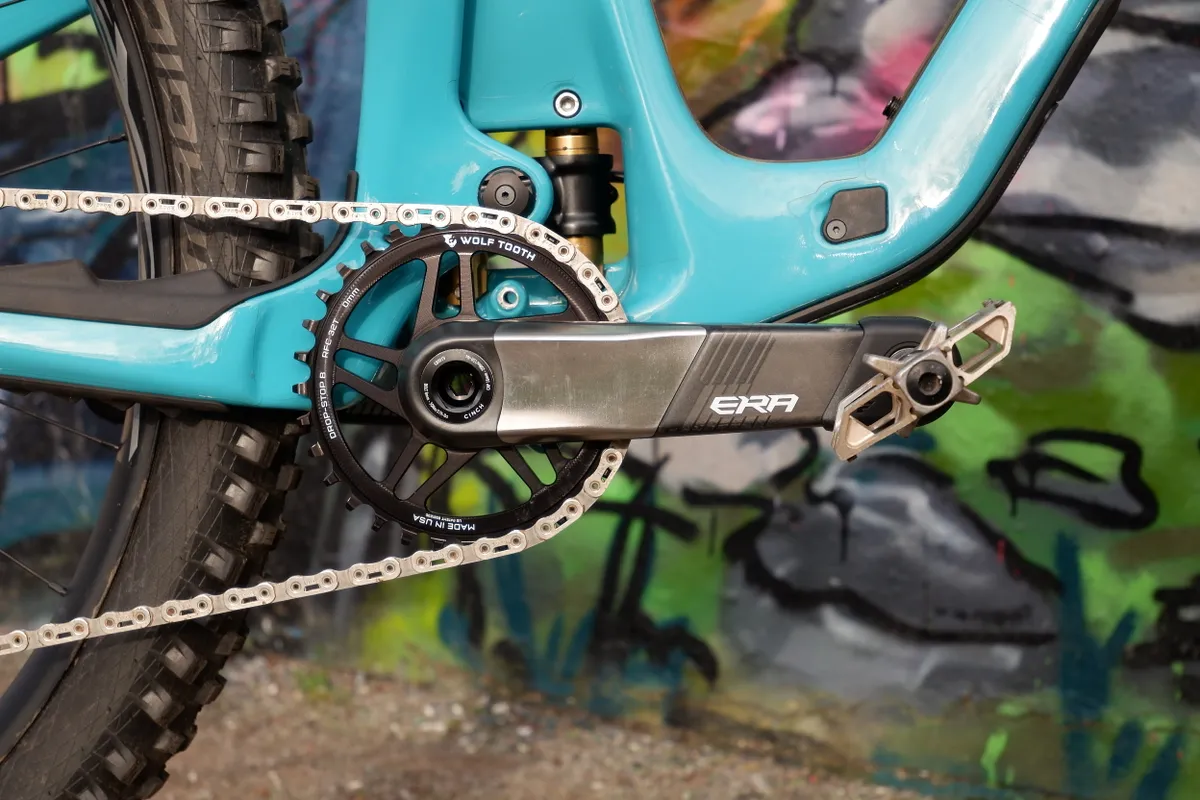
Like road and gravel bikes, mountain bikes come with a broad range of different crankset options.
Nearly every new mountain bike now has a single-ring crankset, except at the very entry-level, making use of a cassette with a very large range to cut down on front-end complexity in the drivetrain.
Shimano offers four levels of 1x12 drivetrain, from Deore through SLX, XT and up to the top-of-the-range XTR groupset, though this is expected to change with the introduction of Shimano Cues.
But you don’t have to have a single-ring mountain bike gear setup and you can get a number of 2x setups across the ranges. Some 11-speed Shimano groupsets are still available too.
SRAM also majors on single rings across its mountain bike range, from SX Eagle through to the flagship XX T-Type Eagle Transmission.
The Eagle moniker represents the American company’s wide-ranging, 12-speed, single-ring only groupsets. Its top-end XX T-Type Eagle crankset is available with 32, 34, 36 or 38-tooth chainrings, while the cheaper lines tend to offer a subset of these sizes, usually 30, 32 or 34-teeth.
Two-ring SRAM options in the GX-1000 model include a 36/22t 11-speed crankset, with the additional option of 38/24t chainrings in 10-speed. The budget S-200 offers a 42/32/22t triple chainset with 9-speed gearing.
With different axle-width standards used on different mountain bikes, the chainline is important, too. Because the cassette is a different distance from the centreline of the bike with different standards, the chainring needs to be a different distance from the axis too in order to run smoothly across the range of gears.
Some brands offer different chainline options for their cranksets to accommodate these different axle widths, and you need to choose the right one for your bike.
Cyclocross cranksets
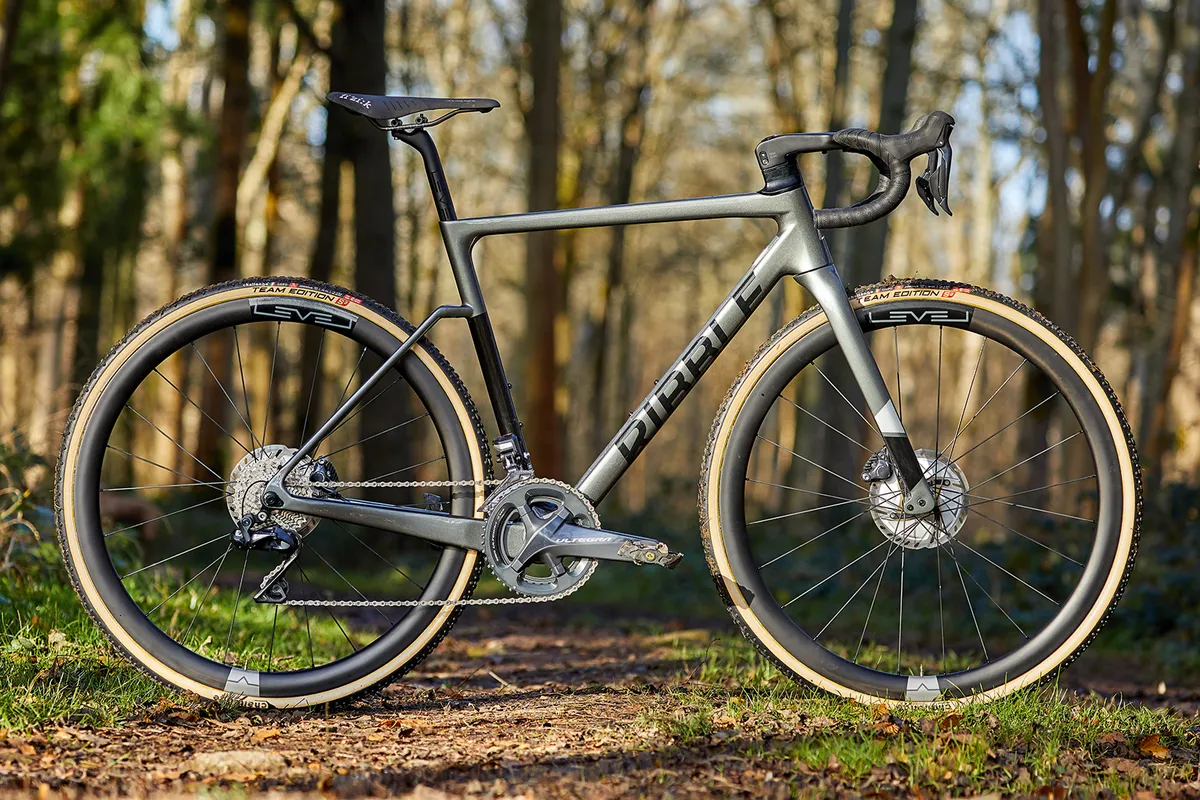
Single chainrings have taken over on cyclocross race bikes in a big way for the same reason that they’re popular for gravel: there's less to go wrong in the muddy conditions of a cyclocross race, plus you can fit a chain guide to reduce the risk of a dropped chain.
The classic cyclocross setup is a 46/36t two-ring groupset, with the smaller jump between chainrings making for more assured shifting. You can still find cyclocross bikes with these ratios.
Electric bike cranksets

While hub drive motors are usually compatible with a variety of cranksets, mid-mounted motors see the cranks and chainring mounted separately from the motor's spindle.
Depending on which motor you have, theses mounting standards can differ, with Bosch, Shimano, Yamaha and Specialized all using different mounts through their ranges.
Aftermarket cranks are available for most electric bike motors, with a few brands using the old-school ISIS bottom bracket mount for easy compatibility.
Hybrids and fixies
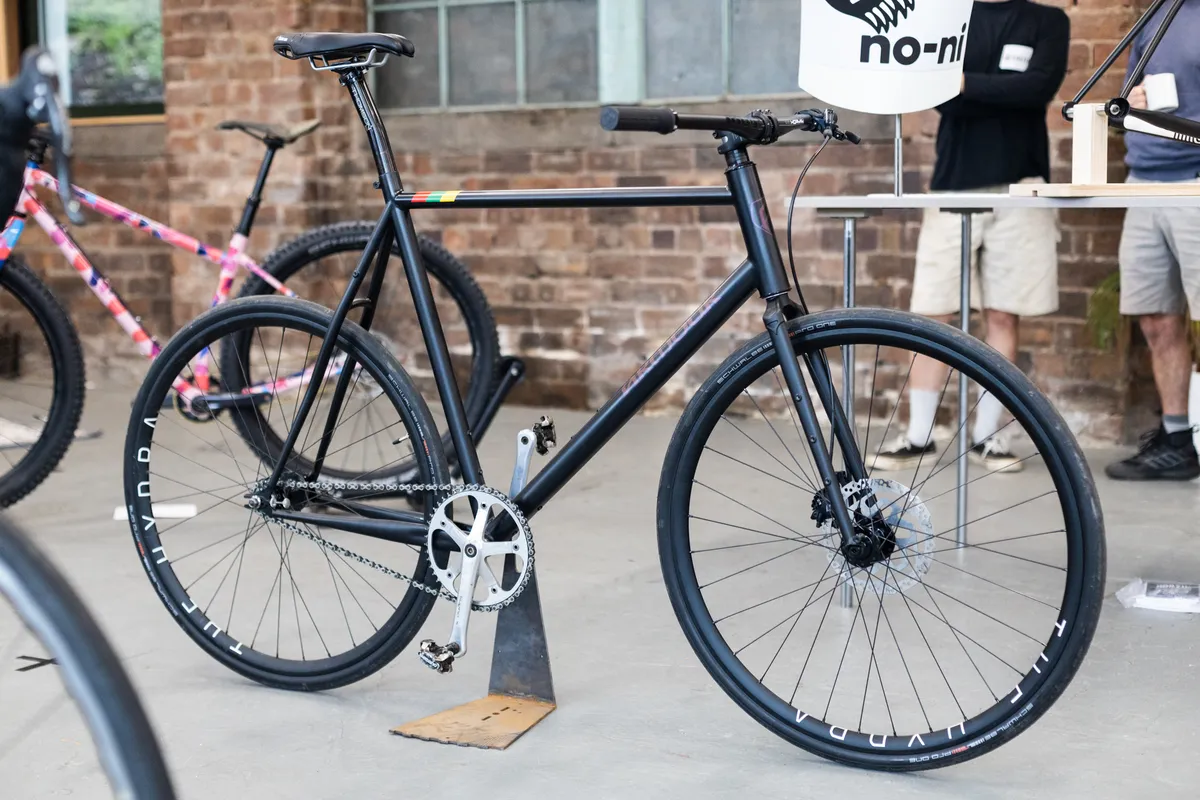
Flat-bar hybrid bikes also come with a variety of different crankset configurations, with both 1x and 2x options common.
Finally, singlespeed bikes, as you’d expect, have a single chainring. The key here is finding the right combination of chainring size and rear sprocket to provide the gear ratio you need for your riding style and terrain.
Fixies (fixed gears) and track bikes have singlespeed drivetrains without a freewheel – that means if the rear wheel is moving, so are your legs.
Crankset alternatives
Elliptical rings
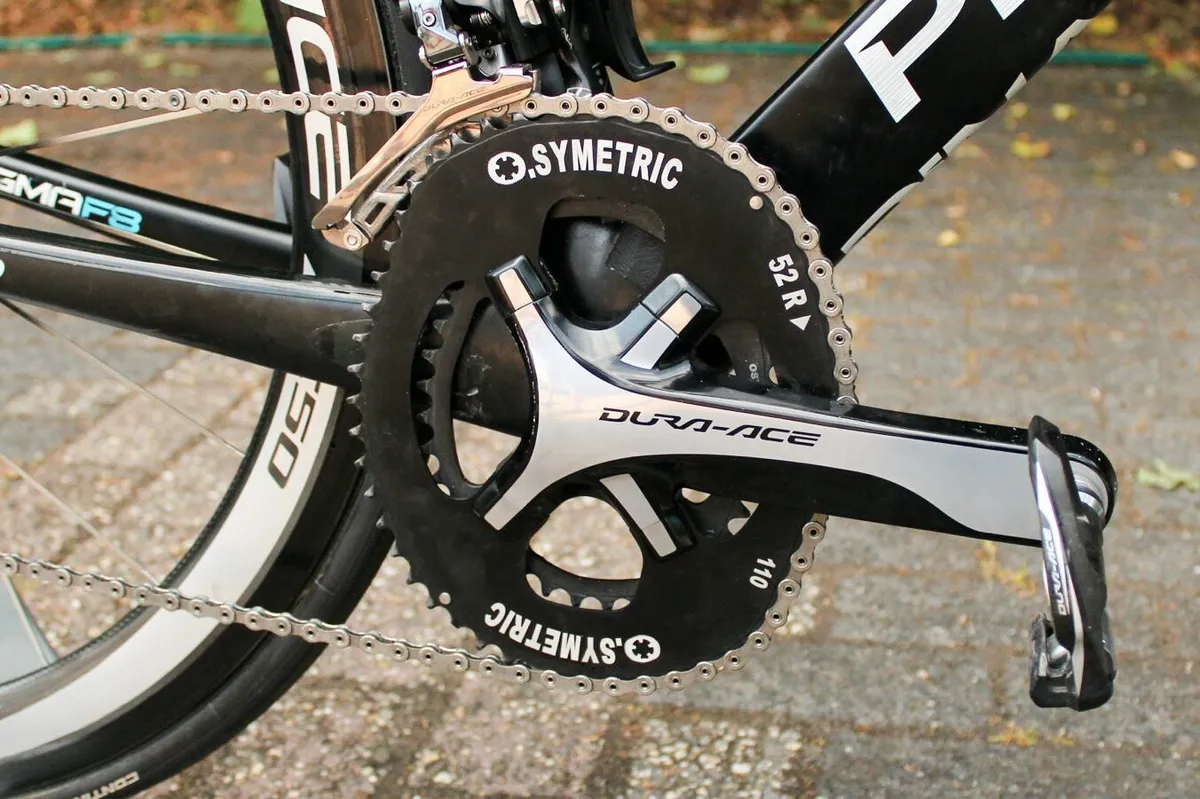
As well as standard round chainrings, you can buy elliptical rings. They were a big deal in the pro ranks a few years ago, used by Bradley Wiggins and Chris Froome, among others, although they’re not so popular now.
The aim is to make pedalling smoother, with the effective gear ratio changing as the crank rotates. The theory here is it makes it easier to pedal through the dead spots at the top and bottom of the pedal stroke.
If you want to try elliptical rings, it’s important to ensure they're compatible with your crank arms.
Belt drives
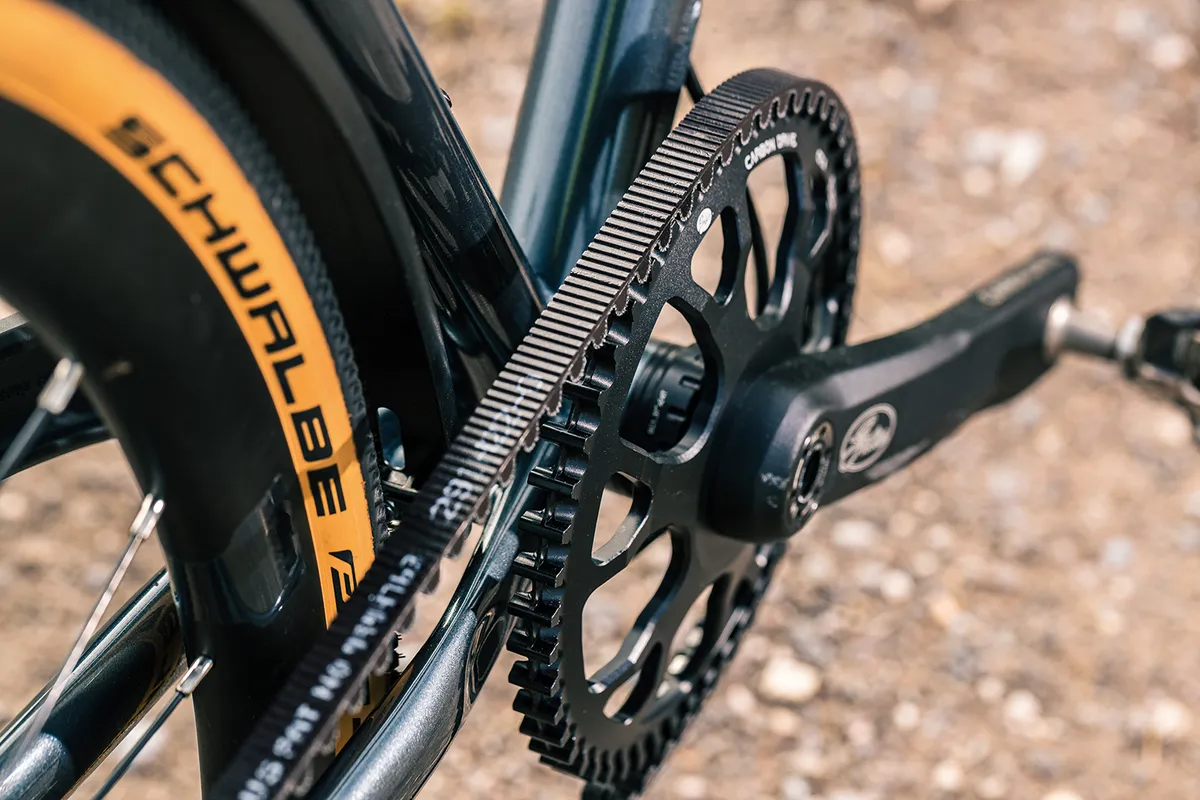
As for other alternatives, not all bikes have a standard toothed crankset.
A belt drive is sometimes found on city bikes. It uses a carbon fibre toothed belt to drive the rear wheel and has the advantage of lower maintenance and lubricant-free operation. Gates is the most common brand here.
Classified hubs
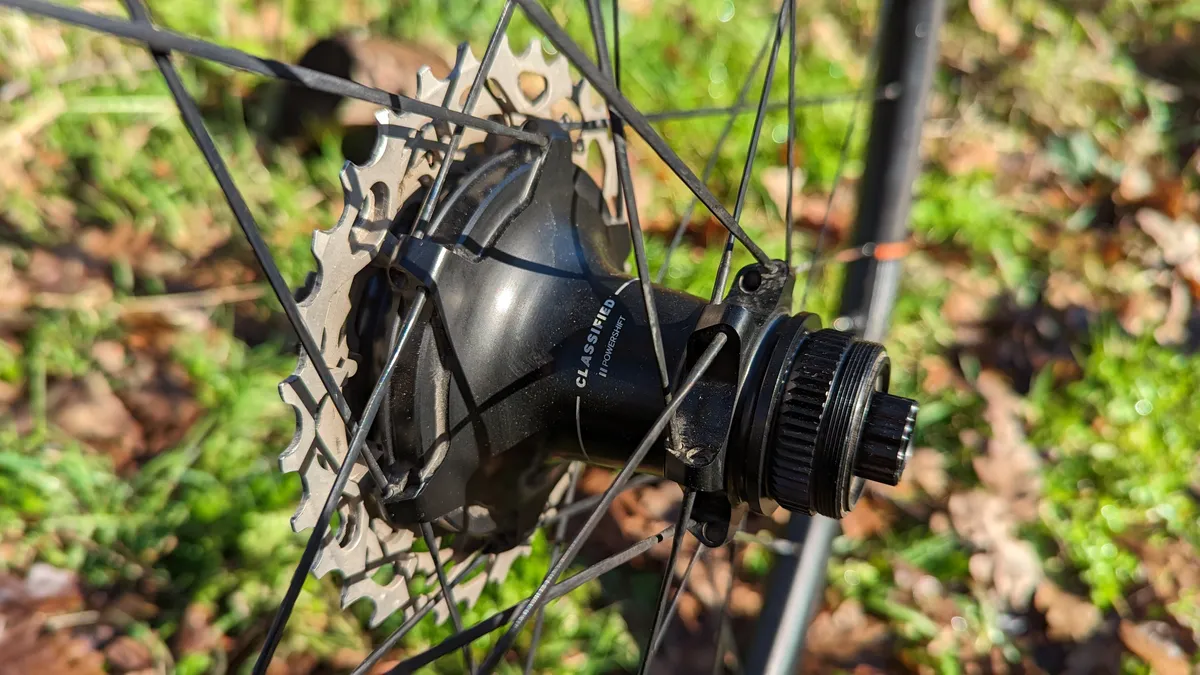
Classified's Powershift hub is a two-speed internal gear hub housed in the rear hub that enables you to run a 1x groupset with the same range as a 2x crankset.
The system is claimed to offer the largest gear range on the market, and is compatible with road, gravel and mountain bikes.
Buying a new crankset or parts
You’ll have realised by now that cranksets are far from simple and there are a lot of different things to consider if you want to replace your crankset or its parts. In general, we’d suggest sticking to the brand and model of crankset that’s already on your bike if you want to avoid compatibility issues.
If you want to make a change, it’s a good idea to discuss your options with a bike mechanic. It may require specialised tools too, so again it’s probably worth leaving it to the professionals.
